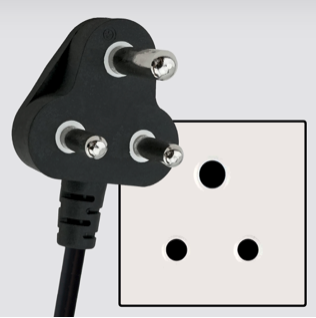Pakistan / اسلامی جمہوریہ پاكستان – Let’s explore here

What’s it like in Pakistan?
Pakistan is a stunningly beautiful country in central Asia. It’s about three times the size of Italy, and is divided into three major areas – the northern highlands, the Indus River plain, and the Balochistan Plateau.
The highlands (think Hindu Kush, Pamir mountains) contain five of the highest mountains in the world, including K2, the second highest mountain on earth, at 28,251 ft (8,611 m) above sea level. The Indus River flows from Kashmir, south west to the port of Karachi. the Balochistan Plateau is mainly rough, uninhabited terrain, in the south west of Palistan. In the east of the country is the Great Indian Desert, most of which sits in India.
It has a very long, rich and troubled history. Its neighbours include China, India, Iran, Afghanistan and Tajikistan.
The population of Pakistan is around 241 million people (2023), around 2½ million of whom live in the metropolitan area of the capital, Islamabad. By contrast, over 20 million live in its most populous city, Karachi. Pakistan has a very young population, with around 37% being under the age of 15 years (2020).

A bit about the history of Pakistan
Ancient History and Early Civilisations
The area that is now Pakistan has a rich history dating back to ancient times. It was home to one of the world’s oldest civilisations, the Indus Valley Civilisation, which flourished around 2500 BC. Major cities like Mohenjo-Daro and Harappa were part of this advanced society known for its urban planning, architecture and trade. The Indus Valley Civilisation declined around 1900 BC, possibly due to climate change or invasion, and was followed by various cultures including the Aryans, who introduced their language and culture to the region.
The Islamic Conquest and the Delhi Sultanate
Islamic influence in the region began in the 7th century with the arrival of Arab traders and conquerors. By the 11th century, various Islamic dynasties, including the Ghaznavids and the Ghurids, established control over parts of modern day Pakistan. The Delhi Sultanate was established in the 13th century, and it helped spread Islam in the region. This period laid the foundation for Muslim rule in south Asia, which would continue for several centuries.
The Mughal Empire
In the 16th century, the Mughal Empire, one of the most powerful and influential empires in Indian history, established its dominance over much of the Indian subcontinent, including present day Pakistan. Under rulers like Akbar the Great, the Mughal Empire brought about a period of cultural flourishing, economic growth and religious tolerance. The Mughal period continued until the early 18th century, though the empire began to decline with the rise of British colonial power in India.
British Colonial Rule
In the mid 19th century, the British East India Company consolidated control over the Indian subcontinent, and by 1858, India came under direct British rule as part of the British Empire. The area that is now Pakistan was divided into regions that were largely controlled by the British. Throughout British rule, there were various movements for independence, and the region saw increasing tension between Hindus and Muslims over political and social issues.
The Partition of India and Creation of Pakistan
In the 20th century, the demand for a separate Muslim state grew, led by the All-India Muslim League, which was headed by Muhammad Ali Jinnah. The League argued that Muslims in India needed their own nation to protect their religious and cultural identity. In 1947, British India was divided into two independent countries: India and Pakistan. Pakistan was created as a separate state for Muslims, with two parts: West Pakistan (modern day Pakistan) and East Pakistan (modern day Bangladesh). The partition resulted in massive migration and violence, with millions of people displaced and hundreds of thousands killed.
Early Years of Pakistan
Pakistan’s early years were marked by political instability. Muhammad Ali Jinnah, the founder of Pakistan, served as the country’s first Governor-General but died in 1948. His death left a power vacuum that led to a series of political struggles. The country experienced frequent changes in leadership, and military coups became a common feature of its political landscape. The first constitution of Pakistan was adopted in 1956, but political instability continued, and in 1958, Pakistan’s first military coup took place, led by General Ayub Khan.
Indo-Pakistani War of 1965 and East Pakistan Crisis
In 1965, Pakistan fought its second war with India over the disputed region of Kashmir. The war ended in a stalemate, but it intensified the rivalry between the two countries. In 1971, after growing tensions and political strife between East and West Pakistan, the people of East Pakistan (now Bangladesh) sought independence. This led to the Bangladesh Liberation War, with India supporting East Pakistan’s independence. As a result, Pakistan lost East Pakistan, and Bangladesh became an independent nation.
Military Rule and the Rise of Benazir Bhutto
After the 1971 war, Pakistan struggled with political instability and continued military rule. In 1977, General Zia-ul-Haq took control through a military coup and ruled Pakistan for over a decade, implementing strict Islamic laws and policies. Zia’s regime ended in 1988 when he died in a plane crash. The following year, Pakistan saw the rise of Benazir Bhutto, who became the country’s first female Prime Minister. She was elected twice, in 1988 and 1993, but her time in office was marred by political corruption and instability.
Kashmir Conflict and Nuclear Arms
The ongoing conflict with India over the Kashmir region remained a significant issue throughout Pakistan’s history. The situation worsened in 1998 when Pakistan and India both conducted nuclear tests, escalating tensions between the two nations. The nuclear arms race in south Asia became a major global concern, though both countries have since engaged in efforts to prevent full-scale war.
The War on Terror and Political Instability
In 2001, after the September 11 attacks in the United States, Pakistan became a key ally in the US led War on Terror. The country faced pressure to crack down on extremist groups operating within its borders, particularly in its border regions with Afghanistan. This period saw political instability, with military leader Pervez Musharraf taking power in a 1999 coup and ruling until 2008. Pakistan faced internal challenges, including extremism, economic issues and conflicts with neighbouring countries.
Recent Developments
In recent years, Pakistan has experienced both progress and setbacks. The country has continued to struggle with terrorism, political corruption and economic difficulties, but there have been efforts to improve infrastructure and attract foreign investment. The country’s leadership has shifted between democratic governments and military influence.

Pakistan road trip
Due to the land border issue in Azerbaijan (see our blog), it’s unsure whether we will visit Pakistan and the other Stans in the short term. It may be that we visit them from the other direction (i.e. from China), once we’ve travelled up through the Americas. As such, we do not have an itinerary for visiting Pakistan as yet. When we do though, hopefully it will improve our knowledge of this intriguing and beautiful country, and enable us to meet some interesting people. We’ll be updating this page at that time – don’t forget to check back 🙂
Map of Pakistan

What’s it like to drive in Pakistan?
They drive on the left hand side of the road in Pakistan. In the main, roads are very poor, with many being unsurfaced dirt tracks. Driving standards are also poor.
Do you require an international driving permit in Pakistan?
We’ve created a dedicated page to driving abroad, which answers this question, and more, which you might find helpful.
Can you use your UK driving license when driving through Pakistan?
We’ve created a dedicated page to driving abroad, which answers this question, and more, which you might find helpful.
Do I need a carnet de passages to drive in Pakistan?
A carnet de passages is required to overland in Pakistan. We’ve created a dedicated page to driving abroad, which answers this question, and more, which you might find helpful.
What is the weather like in Pakistan?
There are four distinct seasons in Pakistan – a cool, dry winter from December through February; a hot, dry spring from March through May; the summer rainy season, or southwest monsoon period, from June through September; and the retreating monsoon period of October and November. Beware the monsoon season with its very heavy rainfall, which can lead to mass local flooding.
What currency do they use in Pakistan?
In Pakistan they use the Pakistani rupee. Cash is widely used. The use of credit / debit cards is not widely accepted. Travellers cheques are not readily accepted. There are many ATMs in cities and towns throughout the country.
You should make yourself aware of the amount that your bank charges you for using credit and debit cards abroad. Often credit cards are cheaper for purchasing items directly, and for withdrawing cash from ATMs.
What language do they speak in Pakistan?
They speak Urdu, Punjabi, Sindhi, Pashto, and Balochi in Pakistan. English is also widely spoken.
What time zone is Pakistan in?
Remember, when you’re planning your next trip to take a look at what time zone it’s in.
Do I need a visa to visit Pakistan?
We’ve created a dedicated, more comprehensive page on visas, which you should find helpful. Check it out!
Is wild camping legal in Pakistan?
Yes, wild camping is fine in Pakistan.
What plug / socket type do they use in Pakistan?
In Pakistan they use plug / socket types C and D.


Health issues in Pakistan
Is it safe to drink water in Pakistan?
No, it is not safe to drink tap water in Pakistan. Bottled water is readily available throughout the country.
What vaccinations are required for Pakistan?
This NHS website is kept up to date with all relevant information on vaccinations in Pakistan.
Phones in Pakistan
What is the country calling code for Pakistan?
The country calling code for Pakistan is +92
What are the emergency phone numbers in Pakistan?
- The emergency number for police in Pakistan is: 15 / 1422
- In Pakistan, the emergency number for ambulance is: 115 / 1122
- The emergency number for fire in Pakistan is: 16
If you’ve got some useful info that you’d like to share, let us know!
And don’t forget to check out all the other pictures!
